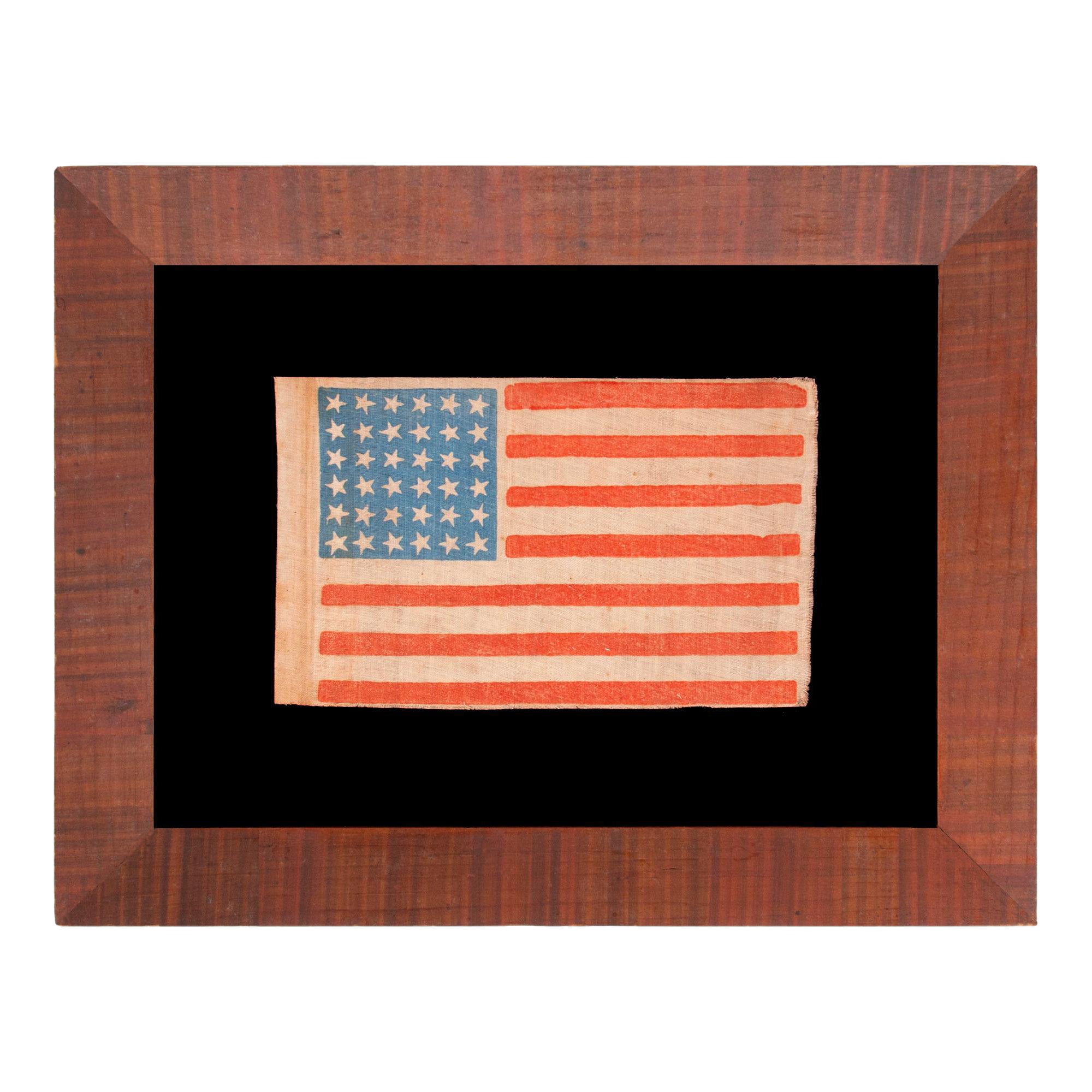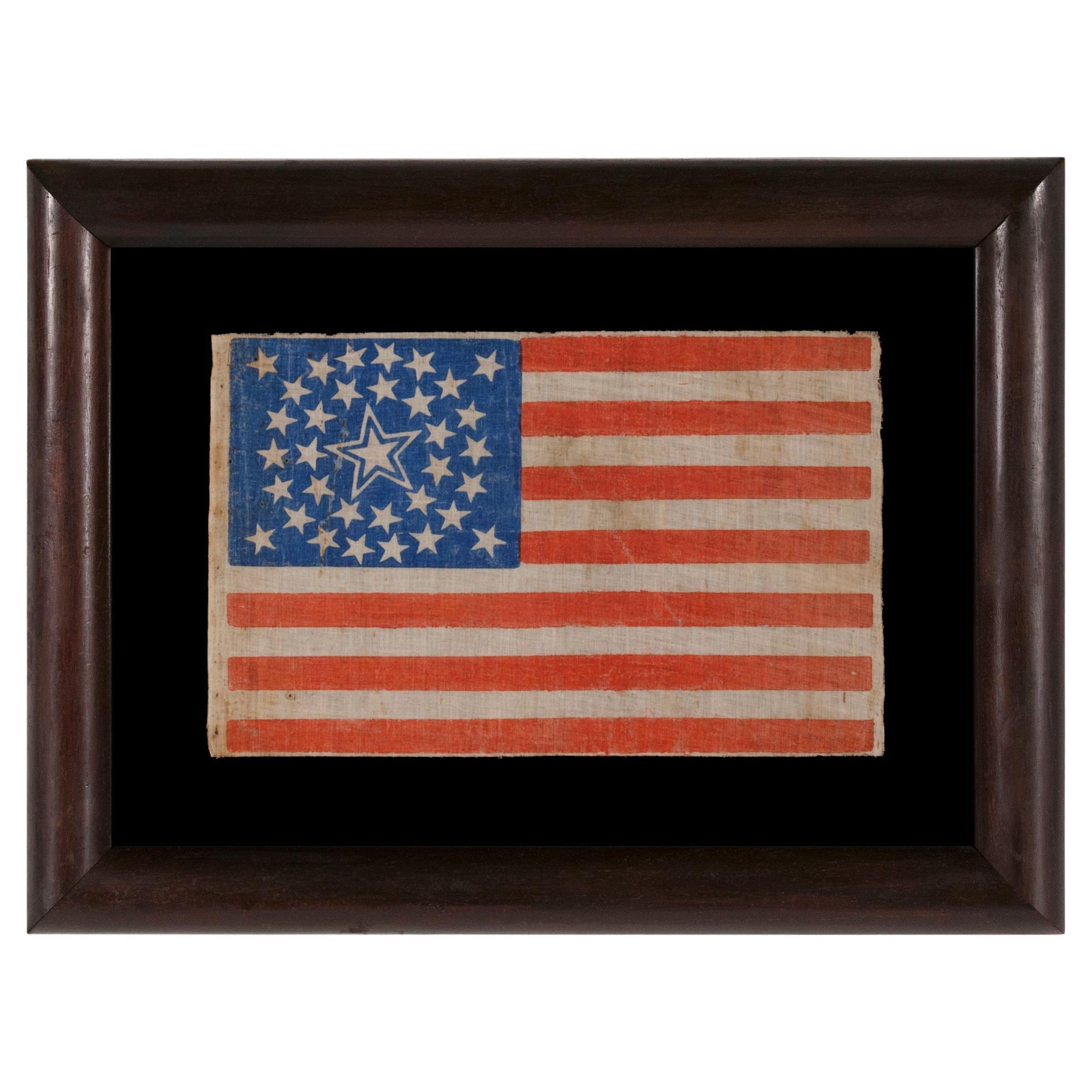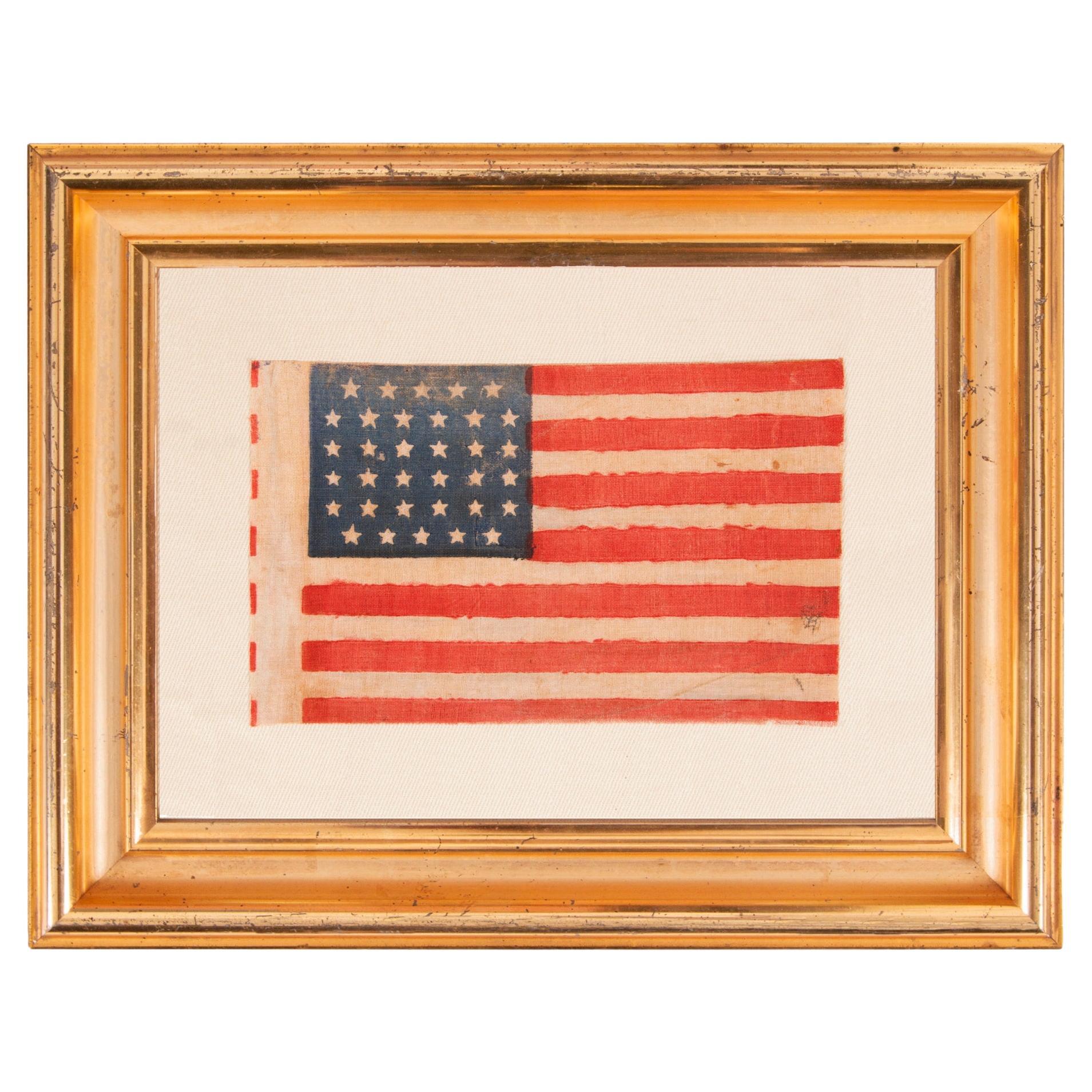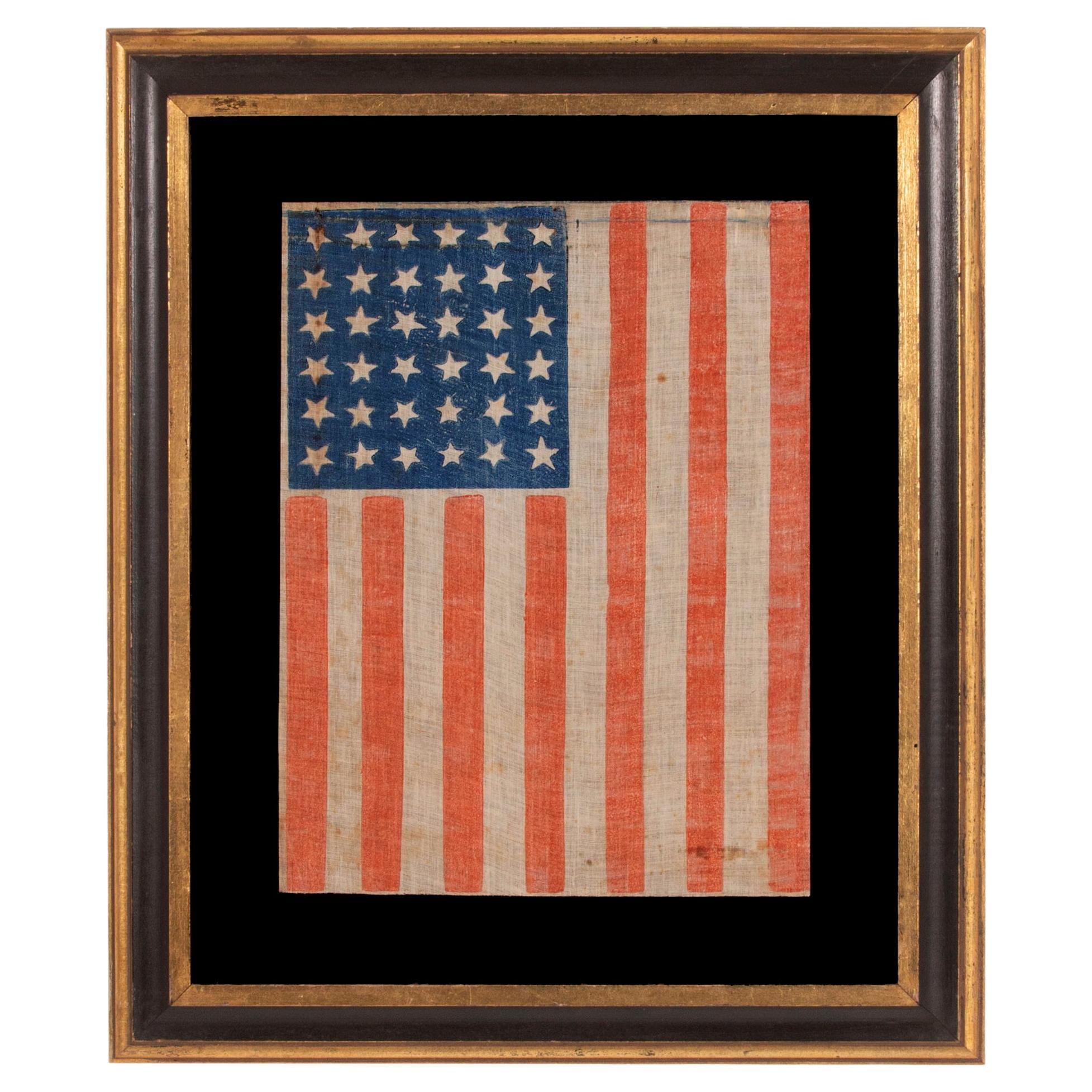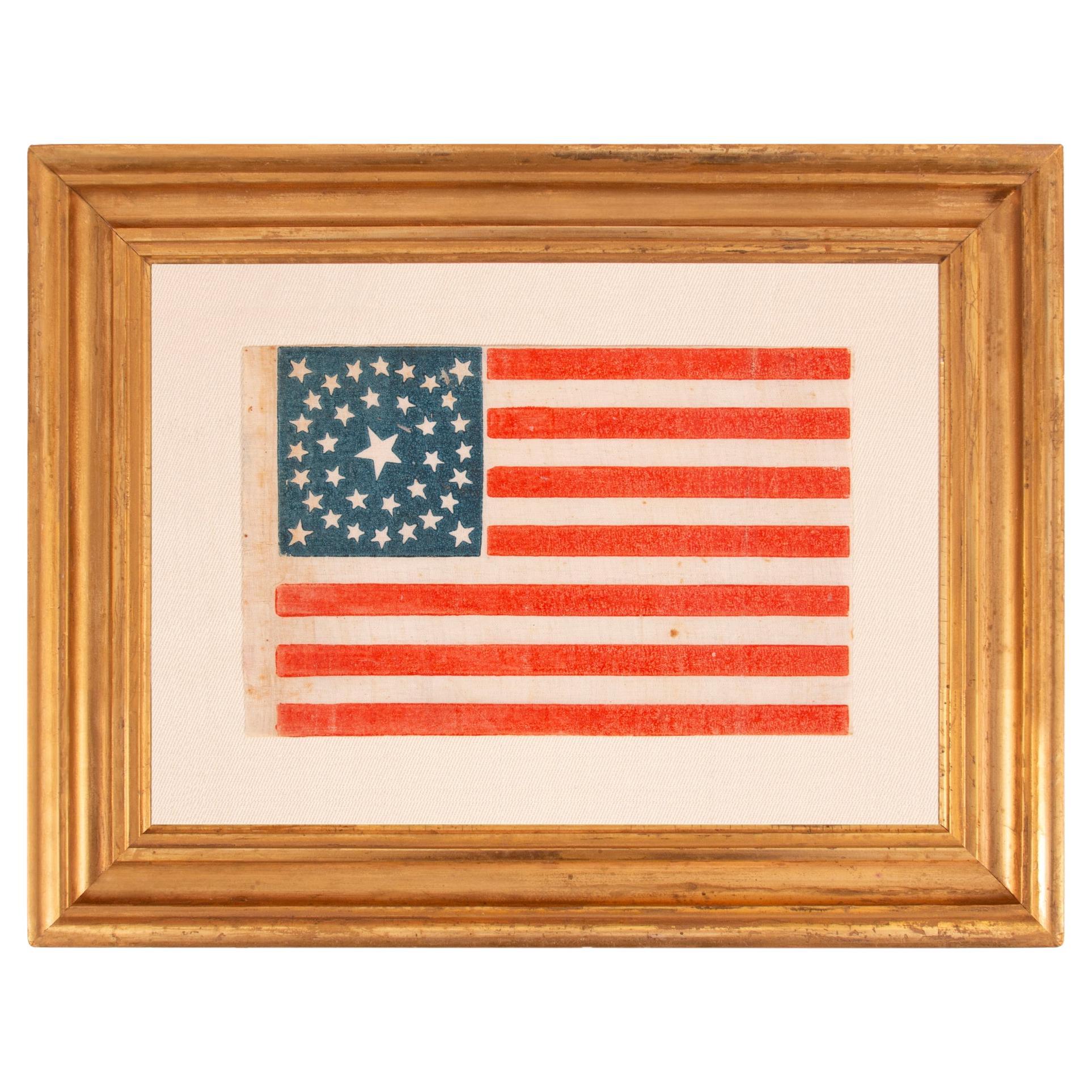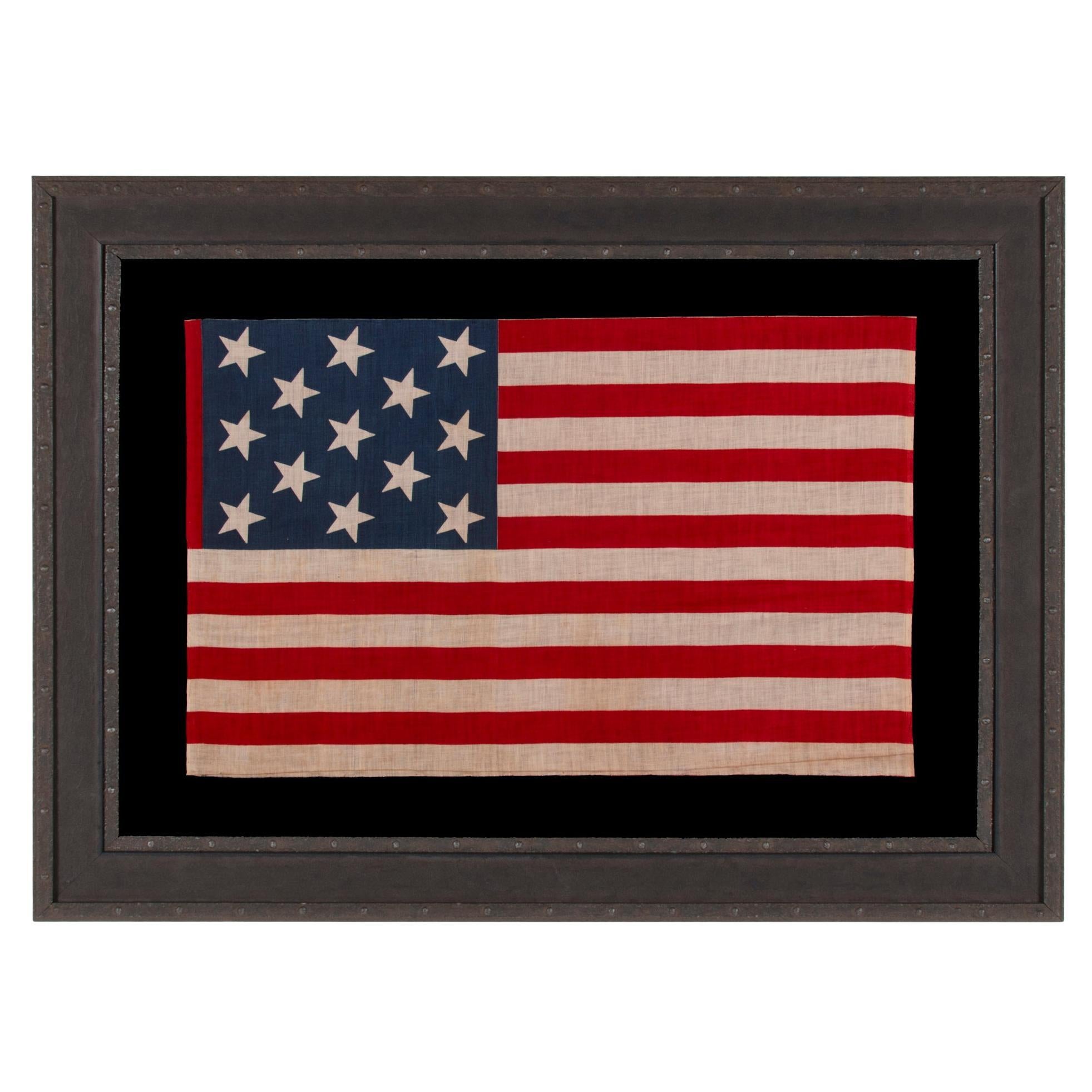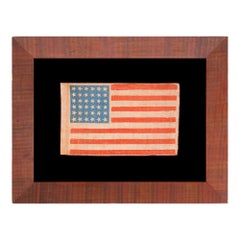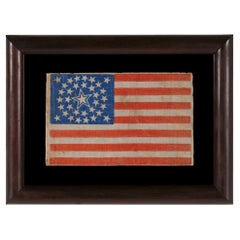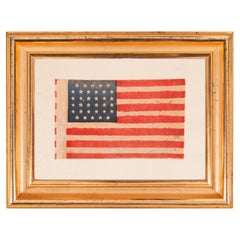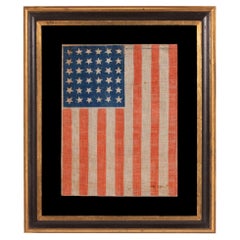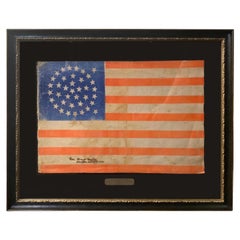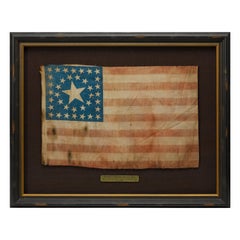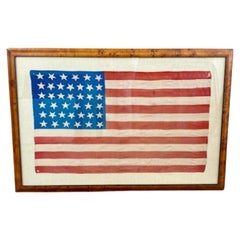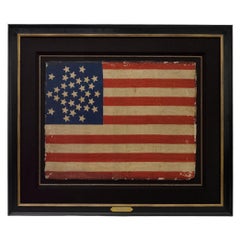Items Similar to 13 Star Rare Parade Flag, Advertising Hop Bitters, circa 1876
Want more images or videos?
Request additional images or videos from the seller
1 of 6
13 Star Rare Parade Flag, Advertising Hop Bitters, circa 1876
Price Upon Request
Price Upon Request
Price Upon Request
Price Upon Request
Price Upon Request
Price Upon Request
Price Upon Request
Price Upon Request
Price Upon Request
Price Upon Request
Shipping
Retrieving quote...The 1stDibs Promise:
Authenticity Guarantee,
Money-Back Guarantee,
24-Hour Cancellation
About the Item
13 STARS IN AN UNUSUAL PATTERN ON A RARE PAPER PARADE FLAG WITH ADVERTISING HOP BITTERS, PROBABLY DISTRIBUTED FOR THE 1876 CENTENNIAL; EXHIBITED AT THE MUSEUM OF THE AMERICAN REVOLUTION FROM JUNE – JULY, 2019
Printed paper parade flag with advertising in the stripes that reads as follows:
HOP BITTERS
Contains Hops, Bochu, Mandrake, and the Purest and Best
MEDICAL QUALITIES OF ALL OTHER BITTERS
They Cure all Diseases of the Stomach, Bowels, Blood, Liver, Kidney, and Urinary Organs,
Nevrvousness, Sleeplessness, Female Complaints & Drunkeness. $1,000 in Gold Will be paid for a case they will not help.
As your Druggist for Hop Bitters & Free Books, and try the Bitters before you Sleep. Take no other.
The canton contains 13 stars, tipped this way and that on their vertical axis, which may be viewed as either in a drawn square with elliptical sides, or as an octagon of stars flanked by a star in each corner, with a single star at the center. This is encircled by a billing for Hop Bitters that reads "The Great Appetizer."
Ample white space is left along the hoist so that the flag could be affixed to a wooden staff. Along the edge is endearing printed instructions that reads "Keep this for the Children."
This extremely rare piece of flag ephemera was probably distributed in the year of the 1876 centennial of American Independence.
Provenance: This flag was exhibited from June 14th – July 21st at the Museum of the American Revolution in Philadelphia, in an exhibit entitled “A New Constellation,” curated by Jeff Bridgman. This was the first ever large scale exhibit of 13 star examples at a major museum.
Mounting: The paint-decorated molding has a gilded inner lip and dates to the period between 1840 and 1870. This is a pressure mount between 100% cotton twill, black in color, and U.V. protective Plexiglas. The black fabric was washed to reduce excess dye. An acid-free agent was added to the wash to further set the dye and the fabric was heat-treated for the same purpose.
Condition: Excellent for the period. There is a small lateral tear in the center at the hoist end and a couple of pinprick-sized holes and a light vertical fold mark in the center. The stripes may have faded. many of my clients prefer early flags to show their age and history of use.
Frame Size (H x L): 11" x 14.5"
Flag Size (H x L): 4.5" x 8"
- Dimensions:Height: 14.5 in (36.83 cm)Width: 11 in (27.94 cm)Depth: 2 in (5.08 cm)
- Materials and Techniques:
- Place of Origin:
- Period:
- Date of Manufacture:1876
- Condition:See Item Descriptio.
- Seller Location:York County, PA
- Reference Number:Seller: 13j-13201stDibs: LU849741463322
About the Seller
5.0
Recognized Seller
These prestigious sellers are industry leaders and represent the highest echelon for item quality and design.
Established in 1991
1stDibs seller since 2008
70 sales on 1stDibs
Typical response time: 1 to 2 days
- ShippingRetrieving quote...Shipping from: York County, PA
- Return Policy
Authenticity Guarantee
In the unlikely event there’s an issue with an item’s authenticity, contact us within 1 year for a full refund. DetailsMoney-Back Guarantee
If your item is not as described, is damaged in transit, or does not arrive, contact us within 7 days for a full refund. Details24-Hour Cancellation
You have a 24-hour grace period in which to reconsider your purchase, with no questions asked.Vetted Professional Sellers
Our world-class sellers must adhere to strict standards for service and quality, maintaining the integrity of our listings.Price-Match Guarantee
If you find that a seller listed the same item for a lower price elsewhere, we’ll match it.Trusted Global Delivery
Our best-in-class carrier network provides specialized shipping options worldwide, including custom delivery.More From This Seller
View All36 Star Antique American Parade Flag, with Canted Stars, ca 1864-1867
Located in York County, PA
36 STAR ANTIQUE AMERICAN PARADE FLAG WITH CANTED STARS IN DANCING ROWS, ON A BEAUTIFUL, CORNFLOWER BLUE CANTON; CIVIL WAR ERA, NEVADA STATEHOOD, 1864-1867
36 star antique American f...
Category
Antique 1860s American Political and Patriotic Memorabilia
Materials
Cotton
Price Upon Request
34 Star Antique American Parade Flag, Kansas Statehood, ca 1861-1863
Located in York County, PA
34 STARS IN A MEDALLION CONFIGURATION ON AN ANTIQUE AMERICAN PARADE FLAG WITH A LARGE, HALOED CENTER STAR; CIVIL WAR PERIOD, KANSAS STATEHOOD, 1861-1863
34 star American national pa...
Category
Antique 1860s American Political and Patriotic Memorabilia
Materials
Cotton
Price Upon Request
34 Star Antique American Parade Flag, Kansas Statehood, ca 1861-1863
Located in York County, PA
34 STAR ANTIQUE AMERICAN FLAG WITH A LINEAL ARRANGEMENT THAT I HAVE TERMED "GLOBAL ROWS, WITH EXCEPTIONAL COLOR AND CRUDE YET BEAUTIFUL FEATURES, OPENING TWO YEARS OF THE CIVIL WAR, ...
Category
Antique 1860s American Political and Patriotic Memorabilia
Materials
Cotton
Price Upon Request
36 Star Antique Parade Flag, Vertical Position, Nevada Statehood, ca 1861-1867
Located in York County, PA
36 STAR ANTIQUE AMERICAN PARADE FLAG, WITH STARS THAT ALTERNATE IN THEIR VERTICAL POSITION FROM COLUMN TO COLUMN AND ROW-TO-ROW, PRINTED ON AN ESPECIALLY INTERESTING LENGTH OF COARSE...
Category
Antique Late 19th Century American Political and Patriotic Memorabilia
Materials
Cotton
35 Star Antique American Parade Flag, West Virginia Statehood, ca 1863-1865
Located in York County, PA
35 STAR ANTIQUE AMERICAN PARADE FLAG WITH A DOUBLE-WREATH STYLE MEDALLION CONFIGURATION OF STARS, PERHAPS THE BEST SURVIVING EXAMPLE IN THIS RARE FORM, CIVIL WAR PERIOD, WEST VIRGINI...
Category
Antique 1860s American Political and Patriotic Memorabilia
Materials
Cotton
13 Star Antique American Parade Flag, ca 1876-1899
Located in York County, PA
13 STAR ANTIQUE AMERICAN PARADE FLAG, WITH A 3-2-3-2-3 CONFIGURATION OF STARS, AN EXTREMELY SCARCE AND UNUSUALLY LARGE VARIETY, MADE circa 1876-1899
13 star American national parade...
Category
Antique Late 19th Century Canadian Political and Patriotic Memorabilia
Materials
Cotton
Price Upon Request
You May Also Like
38-Star American Parade Flag, Flown at a Reception for President Grant, 1880
Located in Colorado Springs, CO
This is a beautifully colored 38-star American parade flag, flown at a public reception for Ulysses S. Grant in October of 1880. This printed flag features a rare, triple medallion s...
Category
Antique 1880s American Political and Patriotic Memorabilia
Materials
Cotton
38-Star Antique American Flag with Unique Canton, circa 1876-1890
Located in Colorado Springs, CO
This is a striking 38-star American flag. The flag dates to 1876-1890, when Colorado (represented by the large star in the center of the flag’s canton) joined the Union as the 38th s...
Category
Antique Late 19th Century American Political and Patriotic Memorabilia
Materials
Muslin
19th Century American 39 Star Flag, circa 1889
Located in Nantucket, MA
19th Century American 39 Star Flag, circa 1889, a period printed silk parade flag with a wavy pattern of dancing stars. This was never an official flag of the United States but was m...
Category
Antique 1880s American Federal Political and Patriotic Memorabilia
Materials
Silk
31-Star Printed American Flag, Celebrating California Statehood, Circa 1850
Located in Colorado Springs, CO
This is a rare 31-star medallion printed American flag, celebrating the addition of California to the Union. The flag is printed on silk and has a spectacular “Great Star” canton pat...
Category
Antique 1850s American Political and Patriotic Memorabilia
Materials
Silk
39-Star Antique American Flag with 'Whimsical' Star Pattern, 1889
Located in Colorado Springs, CO
This is a 39-star unofficial American flag, handmade and printed on cotton. The flag dates to 1889 and has a unique history, thanks to its rare star-count.
The flag’s canton is prin...
Category
Antique 1880s American Political and Patriotic Memorabilia
Materials
Cotton
39-Star Printed American Flag, Commemorating North Dakota Statehood, 1889-1890
Located in Colorado Springs, CO
This is a 39-star unofficial American flag, celebrating North Dakota statehood. The printed flag dates to 1889 and showcases a “whimsical” star pattern in the canton. The flag's cant...
Category
Antique 1880s American Political and Patriotic Memorabilia
Materials
Fabric
More Ways To Browse
Black Memorabilia
Centennial 1876
Small American Flag
Antique American Flag Framed
Antique American History Books
Space Memorabilia
Antique Organs
Antique Ephemera
Staff Wooden Staff
Antique Hoist
1876 American Flag
13 Star Flag
Antique 13 Star Flag
Antique 13 Star American Flag
Antique Medical Scales
Antique American Flags
Union Flag
Virginia 19th Century
